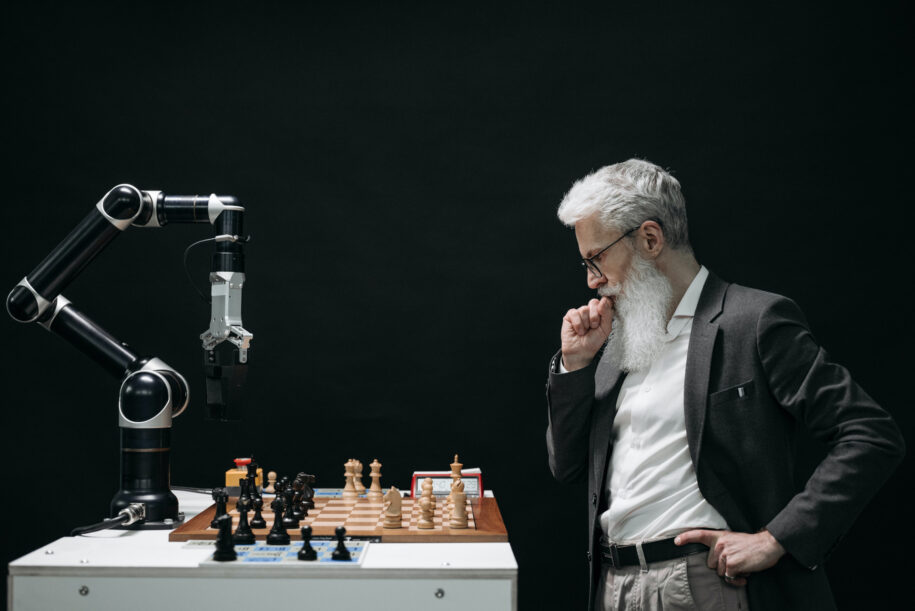
A fast expanding discipline, computer vision has many uses across multiple sectors. Computer vision has undergone a revolutionary change thanks to the invention of deep learning models and end-to-end learning algorithms, which allow computers to automatically learn and recognize complex patterns from vast amounts of data. We will go into the history of computer vision, the difficulties that contemporary computer vision faces, and the viability of AI-based solutions in this article.
Traditional vs. Modern Computer Vision
Traditional computer vision employed shallow machine learning methods and hand-crafted features. In confined set issues and controlled situations, these techniques worked well. They had serious flaws, though, like the inability to generalize to fresh, untested data.
“Teaching Machines to Understand Us” from MIT Technology Review nicely highlights some of the challenges and potential of using deep learning.
Modern computer vision, in contrast, relies on end-to-end learning models like deep learning models that can pick up a task by being given sample data and a supervisory signal.
By enabling the creation of complex models that can handle image and video data, deep learning models have transformed computer vision. They are perfect for a variety of uses, including autonomous driving, face recognition, and object identification. New markets and applications have been made possible by modern computer vision, but it also brings with it new difficulties.
Challenges in Modern Computer Vision
Software Challenges
Data-centric and end-to-end learning models have evolved from algorithms. The foundations of computer vision have changed from the shallow machine learning techniques and hand-crafted features of the past. But since Deep Learning models have been developed, the emphasis has changed from algorithm development to data-centric development. Instead of depending on manually created features, this method trains models on big datasets with annotations to learn directly from the data. In this new era, the problem is to assure the data quality and the model’s ability to generalize to new, unexplored data.
The quantity of computer vision research articles, particularly those using deep learning techniques, has significantly increased as a result of this change. In fact, over 10,000 articles on computer vision have been published in the last ten years, according to an ArXiv study, making it the most popular field for deep learning research.
The availability of high-quality data is one of the biggest obstacles facing contemporary computer vision. Getting high-quality, representative data can be difficult despite improvements in data collection and annotation methods. Machine learning models depend on high-quality data to function properly, and models that lack high-quality data may be prejudiced or erroneous. Achieving this requires a deep understanding of the data, the model, and their interactions.
Hardware Challenges
Modern computer vision has considerable hardware design challenges, and effective architectures are needed to facilitate the execution of particular operations required for deep learning models. For real-time applications where precision and speed are vital, achieving this is essential. On the hardware side, difficulties include price, processing power, and usability.
Businesses have considerable obstacles related to cost when integrating hardware for computer vision applications. Businesses must carefully assess the market segment they are targeting and the processing capabilities they need to offer their product because the hardware requirements for deep learning models might be costly.
Hardware design for computer vision applications has major challenges in terms of processing power. The hardware platform’s processing power must be sufficient for efficient deep learning model execution. For many applications, including object detection, face recognition, and autonomous driving, they must be able to manage massive volumes of data and run complex algorithms in real-time.
Another significant issue that needs to be taken into account when building hardware for computer vision applications is usability. The creation and implementation of connectivity, apps, and models must be simple to use, adaptable, and scalable. Users must be able to design and deploy models, scale their applications as necessary, and connect to the hardware platform fast and efficiently.
Although there are many hardware options, each has trade-offs, and the requirements of the particular application will determine which hardware platform to use. Therefore, organizations must carefully weigh their alternatives to select the hardware platform that best suits their unique requirements.
Viability of AI-Based Products
Any product with a deep learning module must also be feasible, which means it must be scalable, implementable, and profitable. To do this, it is important to carefully analyze the processing power, cost, and market segment. The scalability of AI-based solutions may be constrained by the computationally expensive nature of deep learning models and their correspondingly high hardware requirements. However, AI-based solutions can be profitable and effective with proper planning and implementation.
Opportunities in Computer Vision
Despite these difficulties, computer vision offers a lot of opportunities. The market for computer vision is predicted to develop quickly in the upcoming years, reaching $ 144.46 Billion, Globally, by 2028 at 45.64% CAGR according to Verified Market Research®. Computer vision has several real-world uses in a variety of sectors, including industrial manufacturing, logistics, smart cities and spaces, healthcare, smart retail.
In summary, computer vision has advanced significantly since its debut. The transition from conventional techniques to contemporary deep learning models has presented several opportunities and obstacles for AI-based companies. By tackling these issues head-on and utilizing cutting-edge technology, we can develop ground-breaking solutions that improve our lives in a variety of ways.
End-to-end Software & Services Platform
To Deploy Computer Vision & AI at Scale



